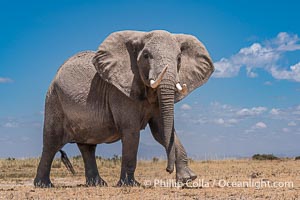
Lone African Elephant crossing dry lake bed, Amboseli National Park.
Species: African elephant, Loxodonta africana
Location: Amboseli National Park, Kenya
Image ID: 39579
Species: African elephant, Loxodonta africana
Location: Amboseli National Park, Kenya
Image ID: 39579
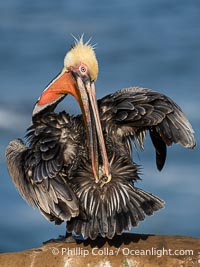
A brown pelican preening, reaching with its beak to the uropygial gland (preen gland) near the base of its tail. Preen oil from the uropygial gland is spread by the pelican's beak and back of its head to all other feathers on the pelican, helping to keep them water resistant and dry. Adult winter breeding plumage.
Species: Brown Pelican, Pelecanus occidentalis, Pelecanus occidentalis californicus
Location: La Jolla, California
Image ID: 40019
Species: Brown Pelican, Pelecanus occidentalis, Pelecanus occidentalis californicus
Location: La Jolla, California
Image ID: 40019

Full Moon Rises over San Diego City Skyline and Mount Laguna, viewed from Point Loma, panoramic photograph. The mountains east of San Diego can be clearly seen when the air is cold, dry and clear as it is in this photo.
Location: San Diego, California
Image ID: 37500
Panorama dimensions: 1002 x 3500
Location: San Diego, California
Image ID: 37500
Panorama dimensions: 1002 x 3500
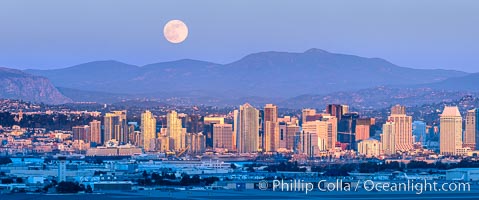
Full Moon Rises over San Diego City Skyline, viewed from Point Loma, panoramic photograph. The mountains east of San Diego can be clearly seen when the air is cold, dry and clear as it is in this photo. Mount Laguna is the peak rising in the distance.
Location: San Diego, California
Image ID: 37501
Location: San Diego, California
Image ID: 37501

San Diego City Skyline at Sunset, viewed from Point Loma, panoramic photograph. The mountains east of San Diego can be clearly seen when the air is cold, dry and clear as it is in this photo. Lyons Peak is in center and the flanks of Mount San Miguel to the right.
Location: San Diego, California
Image ID: 37502
Location: San Diego, California
Image ID: 37502
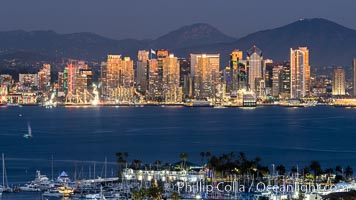
San Diego City Skyline at Sunset, viewed from Point Loma, panoramic photograph. The mountains east of San Diego can be clearly seen when the air is cold, dry and clear as it is in this photo. Lyons Peak is in center and Mount San Miguel to the right.
Location: San Diego, California
Image ID: 37504
Location: San Diego, California
Image ID: 37504

San Diego City Skyline at Sunset, viewed from Point Loma, panoramic photograph. The mountains east of San Diego can be clearly seen when the air is cold, dry and clear as it is in this photo. Lyons Peak is in center and Mount San Miguel to the right.
Location: San Diego, California
Image ID: 37505
Location: San Diego, California
Image ID: 37505
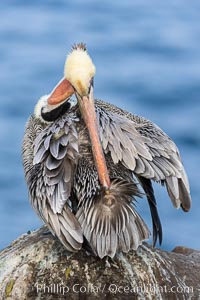
A brown pelican preening, reaching with its beak to the uropygial gland (preen gland) near the base of its tail. Preen oil from the uropygial gland is spread by the pelican's beak and back of its head to all other feathers on the pelican, helping to keep them water resistant and dry.
Species: Brown Pelican, Pelecanus occidentalis, Pelecanus occidentalis californicus
Location: La Jolla, California
Image ID: 37655
Species: Brown Pelican, Pelecanus occidentalis, Pelecanus occidentalis californicus
Location: La Jolla, California
Image ID: 37655
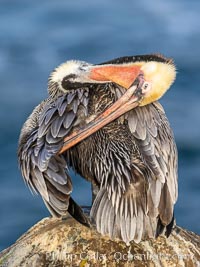
A California brown pelican preening, rubbing the back of its head and neck on the uropygial gland (preen gland) near the base of its tail. Preen oil from the uropygial gland is spread by the pelican's beak and back of its head to all other feathers on the pelican, helping to keep them water resistant and dry.
Species: Brown Pelican, Pelecanus occidentalis, Pelecanus occidentalis californicus
Location: La Jolla, California
Image ID: 37658
Species: Brown Pelican, Pelecanus occidentalis, Pelecanus occidentalis californicus
Location: La Jolla, California
Image ID: 37658
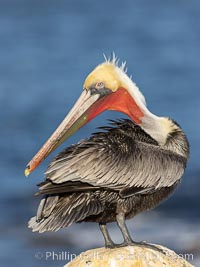
Parsvottanasana, triangle pose, pelican yoga. A brown pelican preening, reaching with its beak to the uropygial gland (preen gland) near the base of its tail. Preen oil from the uropygial gland is spread by the pelican's beak and back of its head to all other feathers on the pelican, helping to keep them water resistant and dry.
Species: Brown Pelican, Pelecanus occidentalis, Pelecanus occidentalis californicus
Location: La Jolla, California
Image ID: 37725
Species: Brown Pelican, Pelecanus occidentalis, Pelecanus occidentalis californicus
Location: La Jolla, California
Image ID: 37725
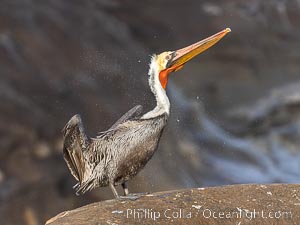
Brown Pelican shakes its feathers, water droplets flying, drying off after foraging on the ocean.
Species: Brown Pelican, Pelecanus occidentalis, Pelecanus occidentalis californicus
Location: La Jolla, California
Image ID: 38894
Species: Brown Pelican, Pelecanus occidentalis, Pelecanus occidentalis californicus
Location: La Jolla, California
Image ID: 38894
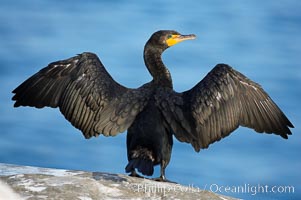
Double-crested cormorant drys its wings in the sun following a morning of foraging in the ocean, La Jolla cliffs, near San Diego.
Species: Double-crested cormorant, Phalacrocorax auritus
Location: La Jolla, California
Image ID: 15071
Species: Double-crested cormorant, Phalacrocorax auritus
Location: La Jolla, California
Image ID: 15071
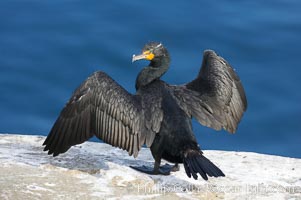
Double-crested cormorant drys its wings in the sun following a morning of foraging in the ocean, La Jolla cliffs, near San Diego.
Species: Double-crested cormorant, Phalacrocorax auritus
Location: La Jolla, California
Image ID: 15072
Species: Double-crested cormorant, Phalacrocorax auritus
Location: La Jolla, California
Image ID: 15072
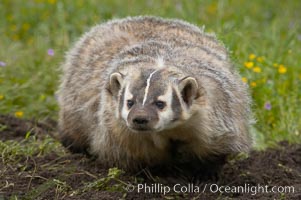
American badger. Badgers are found primarily in the great plains region of North America. Badgers prefer to live in dry, open grasslands, fields, and pastures.
Species: American badger, Taxidea taxus
Image ID: 15947
Species: American badger, Taxidea taxus
Image ID: 15947
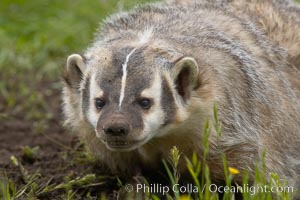
American badger. Badgers are found primarily in the great plains region of North America. Badgers prefer to live in dry, open grasslands, fields, and pastures.
Species: American badger, Taxidea taxus
Image ID: 15948
Species: American badger, Taxidea taxus
Image ID: 15948
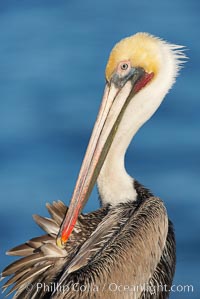
A brown pelican preening, reaching with its beak to the uropygial gland (preen gland) near the base of its tail. Preen oil from the uropygial gland is spread by the pelican's beak and back of its head to all other feathers on the pelican, helping to keep them water resistant and dry. Adult winter non-breeding plumage showing white hindneck and red gular throat pouch.
Species: Brown Pelican, Pelecanus occidentalis, Pelecanus occidentalis californicus
Location: La Jolla, California
Image ID: 18045
Species: Brown Pelican, Pelecanus occidentalis, Pelecanus occidentalis californicus
Location: La Jolla, California
Image ID: 18045
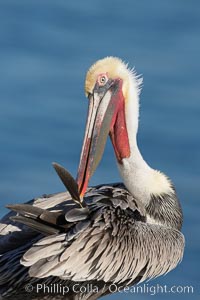
A brown pelican preening, reaching with its beak to the uropygial gland (preen gland) near the base of its tail. Preen oil from the uropygial gland is spread by the pelican's beak and back of its head to all other feathers on the pelican, helping to keep them water resistant and dry. Adult winter non-breeding plumage showing white hindneck and red gular throat pouch.
Species: Brown Pelican, Pelecanus occidentalis, Pelecanus occidentalis californicus
Location: La Jolla, California
Image ID: 18209
Species: Brown Pelican, Pelecanus occidentalis, Pelecanus occidentalis californicus
Location: La Jolla, California
Image ID: 18209
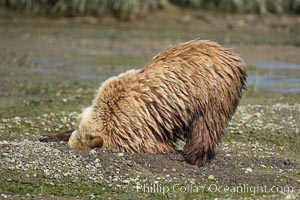
Brown bear digs in a nearly dry river bed for remains of salmon.
Species: Brown bear, Ursus arctos
Location: Lake Clark National Park, Alaska
Image ID: 19192
Species: Brown bear, Ursus arctos
Location: Lake Clark National Park, Alaska
Image ID: 19192
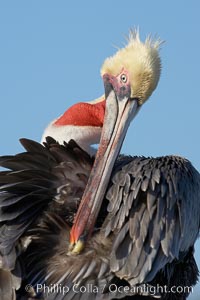
A brown pelican preening, reaching with its beak to the uropygial gland (preen gland) near the base of its tail. Preen oil from the uropygial gland is spread by the pelican's beak and back of its head to all other feathers on the pelican, helping to keep them water resistant and dry.
Species: Brown Pelican, Pelecanus occidentalis, Pelecanus occidentalis californicus
Location: La Jolla, California
Image ID: 19946
Species: Brown Pelican, Pelecanus occidentalis, Pelecanus occidentalis californicus
Location: La Jolla, California
Image ID: 19946
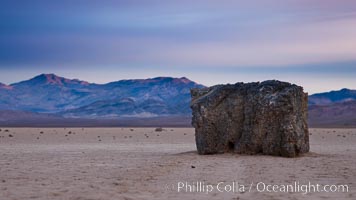
Sunrise on the Racetrack Playa. The sliding rocks, or sailing stones, move across the mud flats of the Racetrack Playa, leaving trails behind in the mud. The explanation for their movement is not known with certainty, but many believe wind pushes the rocks over wet and perhaps icy mud in winter.
Location: Racetrack Playa, Death Valley National Park, California
Image ID: 27701
Location: Racetrack Playa, Death Valley National Park, California
Image ID: 27701
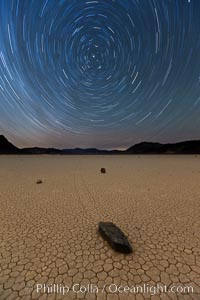
Racetrack sailing stone and star trails. A sliding rock of the Racetrack Playa. The sliding rocks, or sailing stones, move across the mud flats of the Racetrack Playa, leaving trails behind in the mud. The explanation for their movement is not known with certainty, but many believe wind pushes the rocks over wet and perhaps icy mud in winter.
Location: Racetrack Playa, Death Valley National Park, California
Image ID: 27668
Location: Racetrack Playa, Death Valley National Park, California
Image ID: 27668
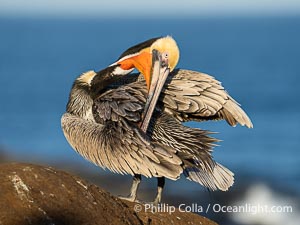
A brown pelican preening, reaching with its beak to the uropygial gland (preen gland) near the base of its tail. Preen oil from the uropygial gland is spread by the pelican's beak and back of its head to all other feathers on the pelican, helping to keep them water resistant and dry.
Species: Brown Pelican, Pelecanus occidentalis, Pelecanus occidentalis californicus
Location: La Jolla, California
Image ID: 40075
Species: Brown Pelican, Pelecanus occidentalis, Pelecanus occidentalis californicus
Location: La Jolla, California
Image ID: 40075
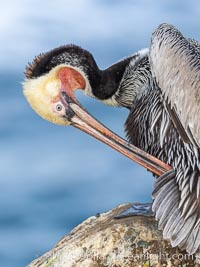
A brown pelican preening, reaching with its beak to the uropygial gland (preen gland) near the base of its tail. Preen oil from the uropygial gland is spread by the pelican's beak and back of its head to all other feathers on the pelican, helping to keep them water resistant and dry.
Species: Brown Pelican, Pelecanus occidentalis, Pelecanus occidentalis californicus
Location: La Jolla, California
Image ID: 37656
Species: Brown Pelican, Pelecanus occidentalis, Pelecanus occidentalis californicus
Location: La Jolla, California
Image ID: 37656
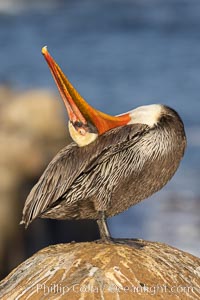
A California brown pelican preening, rubbing the back of its head and neck on the uropygial gland (preen gland) near the base of its tail. Preen oil from the uropygial gland is spread by the pelican's beak and back of its head to all other feathers on the pelican, helping to keep them water resistant and dry.
Species: Brown Pelican, Pelecanus occidentalis, Pelecanus occidentalis californicus
Location: La Jolla, California
Image ID: 37684
Species: Brown Pelican, Pelecanus occidentalis, Pelecanus occidentalis californicus
Location: La Jolla, California
Image ID: 37684
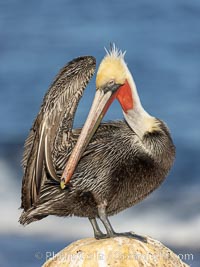
A brown pelican preening, reaching with its beak to the uropygial gland (preen gland) near the base of its tail. Preen oil from the uropygial gland is spread by the pelican's beak and back of its head to all other feathers on the pelican, helping to keep them water resistant and dry.
Species: Brown Pelican, Pelecanus occidentalis, Pelecanus occidentalis californicus
Location: La Jolla, California
Image ID: 37726
Species: Brown Pelican, Pelecanus occidentalis, Pelecanus occidentalis californicus
Location: La Jolla, California
Image ID: 37726
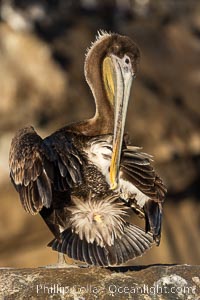
A juvenile brown pelican preening, reaching with its beak to the uropygial gland (preen gland) near the base of its tail. Preen oil from the uropygial gland is spread by the pelican's beak and back of its head to all other feathers on the pelican, helping to keep them water resistant and dry. Adult winter non-breeding plumage.
Species: Brown, Pelecanus occidentalis, Pelecanus occidentalis californicus
Location: La Jolla, California
Image ID: 38967
Species: Brown, Pelecanus occidentalis, Pelecanus occidentalis californicus
Location: La Jolla, California
Image ID: 38967
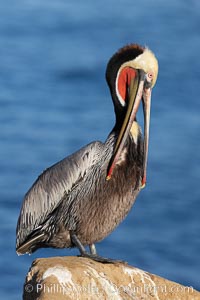
A brown pelican preening, reaching with its beak to the uropygial gland (preen gland) near the base of its tail. Preen oil from the uropygial gland is spread by the pelican's beak and back of its head to all other feathers on the pelican, helping to keep them water resistant and dry. Note adult winter breeding plumage in display, with brown neck, red gular throat pouch and yellow and white head.
Species: Brown Pelican, Pelecanus occidentalis, Pelecanus occidentalis californicus
Location: La Jolla, California
Image ID: 20262
Species: Brown Pelican, Pelecanus occidentalis, Pelecanus occidentalis californicus
Location: La Jolla, California
Image ID: 20262
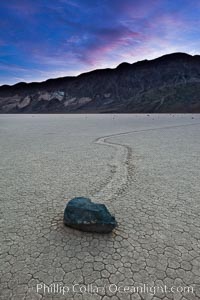
Sunrise on the Racetrack Playa. The sliding rocks, or sailing stones, move across the mud flats of the Racetrack Playa, leaving trails behind in the mud. The explanation for their movement is not known with certainty, but many believe wind pushes the rocks over wet and perhaps icy mud in winter.
Location: Racetrack Playa, Death Valley National Park, California
Image ID: 27699
Location: Racetrack Playa, Death Valley National Park, California
Image ID: 27699
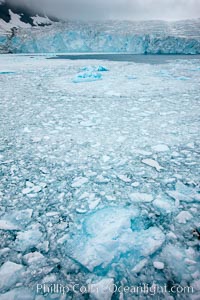
Drygalski Fjord, packed with brash ice which has broken away from Risting Glacier at the end of the narrow fjord.
Location: Drygalski Fjord, South Georgia Island
Image ID: 24687
Location: Drygalski Fjord, South Georgia Island
Image ID: 24687
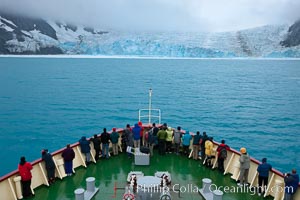
M/V Polar Star approaches Jenkins Glacier (left), Risting Glacier (center) and a third glacier (right) at the end of Drygalski Fjord.
Location: Drygalski Fjord, South Georgia Island
Image ID: 24688
Location: Drygalski Fjord, South Georgia Island
Image ID: 24688